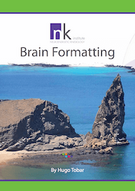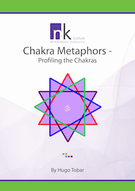Physiology Formatting

This course extends the introductory concepts of formatting from the Brain Formatting course and applies these concepts to the physiology of the organs and glands associated with the 14 meridians. There are physiology formats for 25 organs and gland associated with the 14 meridians.
The procedures include relevant formats for hormones, neurotransmitters and nutrition specific for each organ or gland. There are also procedures for energy production and hydration that can be applied for each organ or gland. This course establishes a good grounding for advanced Neuroenergetic Kinesiology courses but at the same time gives effective techniques for balancing different physiology systems of the body.
Physiology Fortmatting takes you on a journey through the vital processes for living systems - oxygenation, hydration and energy production. This course extends the concepts of formatting introduced in Brain Formatting and applies these concepts to the physiology of the organs and glands associated with the 14 meridians. You will learn to work with twenty-five organs and glands associated with these meridians. The procedures include the relevant formats for hormones, neurotransmitters and nutrients involved in these vital processes. Mastering the art of working with the body system organs and glands perfectly complement the previous study into energy systems and the brain as well as provide an excellent foundation into advanced study of biochemistry.
2 days | prerequisite: Brain Formatting
Brain Formatting

This course provides an introduction to formatting, a model of how formatting works. The treatment triangle, showing the relationship between psychology, subtle anatomy, and anatomy & physiology. How to build up complex stress patterns using the ‘jaw stacking’ mechanism. An introduction to the nervous system and the Applied Physiology/Neural Systems Kinesiology system of Brain Formatting.
I provides an introduction into the body’s three main areas of neural stimulation: the brain, the heart and the enteric nervous system. Each of these areas has its own relative autonomy and plays vital roles in maintaining health and wellbeing. As they are essential to our growth, development and survival, these support systems often carry within their structures great amounts of stress accumulated over a lifetime.
Formatting is one of the unique techniques used in modern kinesiology modalities. It enables the practitioner to access and release stress from deep within the organisation of the nervous system by creating complex resonance patterns. By incorporating neurology into balancing, it allows you to work with stress at a deeper level by identifying precise areas of imbalance and by monitoring its impact on anatomy and physiology.
2 days | prerequisite: Touch for Health 3 (or equivalent)
Principles of Kinesiology

Principles of Kinesiology is a modern introductory course into Kinesiology. It is designed as an introductory course for Neuroenergetic Kinesiology which has been developed by Hugo Tobar. This course goes back to first principles from TCM (Traditional Chinese Medicine) and the meridian system, yogic knowledge from India and modern knowledge of Anatomy and Physiology.
The course is designed for people who want to begin practice in the Neuroenergetic Kinesiology model of working with stress formatting. Topics covered in the eight days include the following:
- Introduction to human energetic anatomy
- Introduction to muscle structure and function
- Introduction to the General Adaptation syndrome theory of stress
- Introduction to the theories of Traditional Chinese medicine including
o Meridians
o Acupoints
o Chi
o The five elements
o Yin yang theory
- Introduction to chakras and their effect on the nervous system
- Introduction to neuroreflexes including neurovascular and neurolymphatic reflexes
- How to use an indicator muscle
- Meridian – muscle test relationships
- 20 muscle tests for different meridian – organ relationships
- Reactive muscle balancing
You will learn all about the theories of the human energetic anatomy and how it can be accessed. You will also learn how muscle testing works and how meridians and chakras are connected to muscles, emotions and organs.
This exciting course was created after Hugo Tobar developed more complex courses specifically to prepare beginners with the theory and techniques for more complex study. It is one of few introductory courses that include the 8 extraordinary meridians, divergent channels, connecting channels and muscle meridians. This more extensive understanding of Traditional Chinese Medicine concepts deepens the beginner student's knowledge and appreciation of the origins and development of kinesiology.
Other important kinesiology techniques will be studied, such as the use of finger modes (mudras), correction for 20 different muscles and the knowledge to build a kinesiology balance with all of these elements.
Hours: 14 per weekend | perequesite: none
4 x 2 days = 64 hours + 16 hours practice sessions + 66 hours of workbooks
--> overall 146 hours of kinesiology
Chakra Metaphors

"Using the psychology of the chakra system to find metaphors for using a touch for health balance."
This introductory course presents the energetic anatomy of the chakras and their impacts on emotional and psychological states and life experiences. The aim of the course is to help students develop an understanding of the six states of a chakra and the effects of chakra stress on human behaviour. Various behavioural patterns associated with imbalances of the major chakras and some key minor chakras are discussed along with balancing techniques to work on these imbalances.
This course provides students with:
- Understanding of the yin and yang aspects of chakras and chakra expression;
- Techniques to investigate the state of each chakras and draw a chakra profile of the major chakras and some minor chakras;
- Detailed information on the effects of chakra imbalances on behavioural, emotional and psychological state;
- Charts of characteristic emotions and behaviours associated with each chakra and its state specific state;
Unique chakra balancing techniques to be used for chakra imbalances as well as foundation correction tools for kinesiology work.
2 days | prerequisite: Principles of Kinesiology or Touch for Health 4
